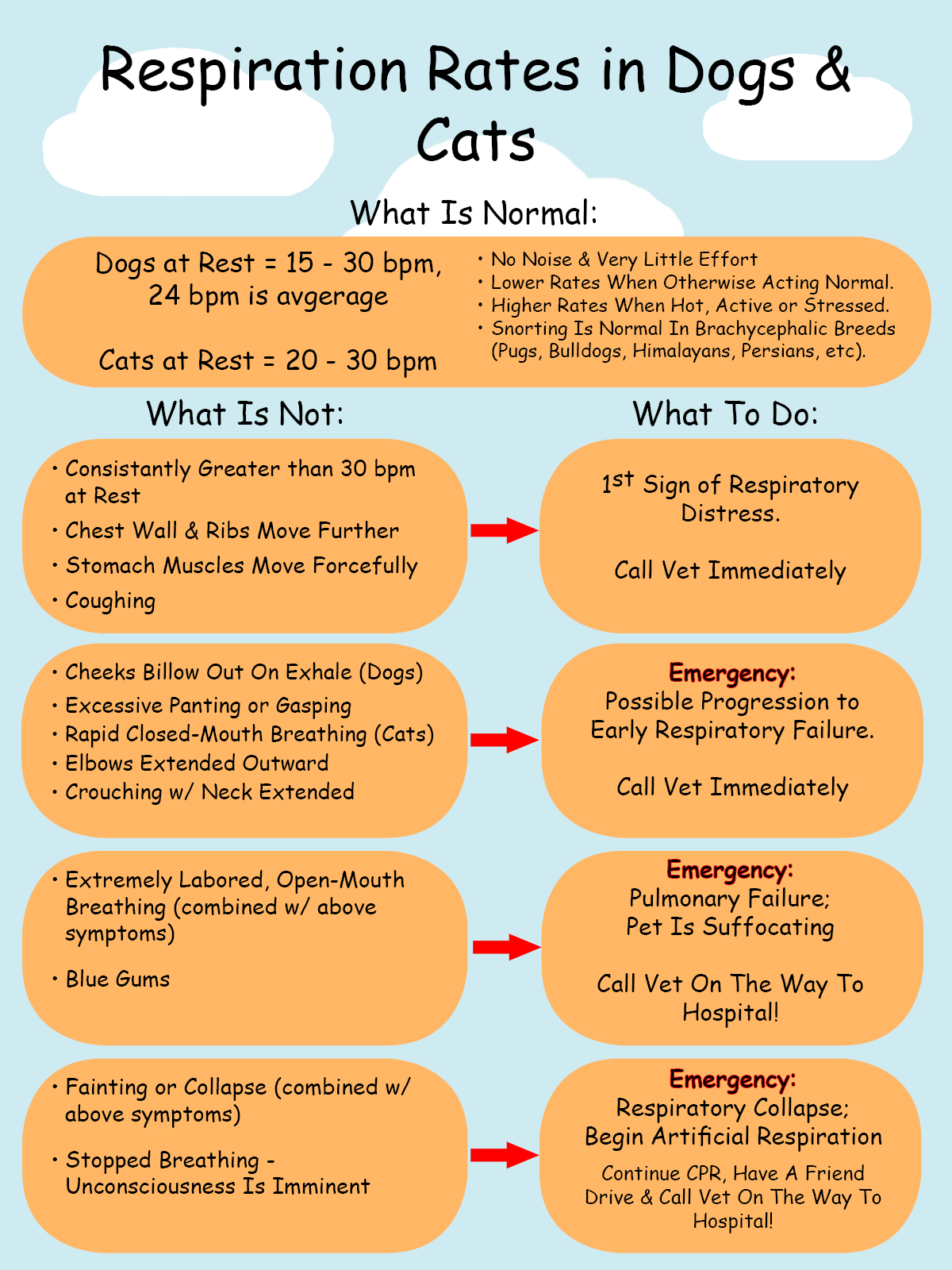Checking Your Dog or Cat's Respiration Rate
The normal respiration rate for dogs is between 10 to 35 breaths per minute, with the average being around 24 breaths per minute. For cats, the rate is 20 to 40 times per minute. When your pet is resting quietly, anything other than quiet, effortless breathing requires medical attention and, in extreme cases, artificial respiration.
As with all the vital signs, you should become familiar with what your pet’s normal rate of respiration is when he is resting & relaxed, and also when he has been active, so you will be able to notice more quickly when something may be wrong. Periodically doing your own ‘health checks’ on your pets can help you achieve this.
How To Check Your Pet’s Respiration Rate:
- To check your pet’s resting respiration rate, simply count his chest movements over a 60 second period, or a 15 second period and multiply it by four.
- This will give his number of breaths per minute (bpm).
- **Keep in mind that the same abbreviation is used for beats per minute when checking heart rate, so don’t confuse those numbers in your records.
Download our Normal Vital Signs Record to document your pet’s vital signs. If you have multiple pets, print and fill out a record for each pet and keep it in their medical file.
Naturally, dogs that are hot, exercising, nervous or excited will breathe faster and may pant up to 200 times per minute. If your dog is panting for no apparent reason, or if he exhibits any of the other symptoms shown in the chart below, take the necessary actions listed. It is worth noting that unusually slow or shallow breathing can be a cause for concern in both cats and dogs as well. If you notice any type of breathing that is not the norm, monitor them closely to determine if medical treatment is needed.
Panting and open-mouthed breathing in cats are considered danger signs because cats do not use panting as a means to cool off the way dogs do. If your cat is panting or breathing with her mouth open, call the vet immediately.
It is also worth noting that it can be more difficult to detect breathing issues in cats due to purring and the fact that they tend to hide and are generally more solitary animals. Keep an eye out for anything odd - it could be as simple as they 'just don't look or act right' that alerts you to a breathing problem.
Understanding Respiratory Symptoms In Both Dogs And Cats:


